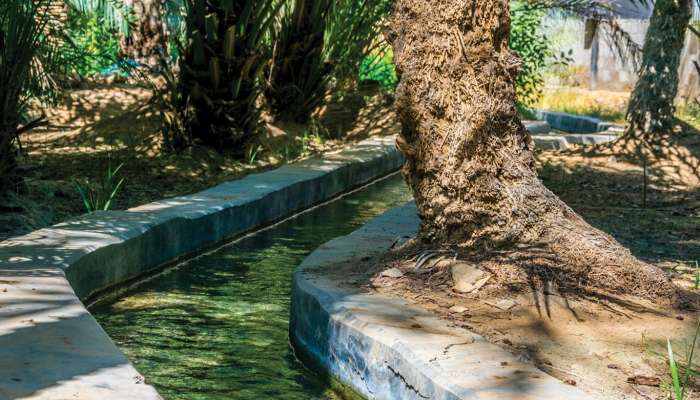
If the forts and castles of Oman depicts the country's history and heritage, Oman's traditional irrigation system, the falaj system, showcases its uniqueness in its own way. They represent an old traditional model for the utilisation of groundwater. Visit any village or town in Oman and you are sure to find these narrow water channels running through houses, streets and farms. The source of falaj water is groundwater found in the subsoil or valleys.
According to Oman's Ministry of Tourism, "The falaj is an original Omani irrigation system, deep-rooted in the country’s land and history. It relies on water stored underground and it is extracted in a simple manner without the use of machines for agriculture and all other essential uses."
This system is not dependent on any pumps or machines to extract water. Rather it uses the gravitational force for extraction. The aflaj are divided into three main types. While the Dawoodi Falaj are long channels dug underground that run for several kilometres with their depth reaching up to tens of metres with water present all year round, Ghaili Falaj receive their water from ponds or running water.
Their depths do not exceed 3-4 metres. Water quantities increase in these falaj directly after rainfall and usually dry up quickly during extended dry periods. Falaj Al Khatmayn and Falaj Daris in Dakhiliyah Governorate that are also mentioned in the World Heritage List are examples of Dawoodi Falaj.
Ayni Falaj is another type where the falaj draws water directly from the springs (wells), including hot springs. The importance of these falaj depends on their water quality, which varies between hot and cold, and between fresh drinking water, saline water, and between alkaline water mixed with valley water, considered suitable for agriculture.
The most important of these falaj are Falaj Ayn Al Kasfah in Rustaq, Falaj Al Hamam in Baushar and Falaj Al Jaylah in Sur in Al Sharqiyah South Governorate (Eastern Region).